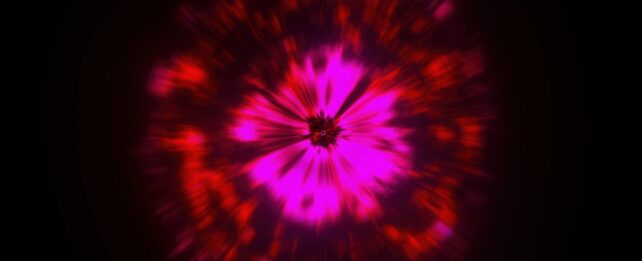We're now a step closer to understanding how the Universe avoided an antimatter apocalypse. CERN scientists have discovered tantalizing clues of a fundamental difference in the way physics handles matter and antimatter.
Experiments at the Large Hadron Collider (LHC) have verified an asymmetry between matter and antimatter forms of a particle called a baryon.
Known as a charge-parity (CP) violation, the effect has only previously been detected in another class of particles, called mesons. But experimental evidence in baryons, which make up the bulk of the Universe's matter, is something physicists have been long hunting for.
"It shows that the subtle differences between matter and antimatter exist in a wider range of particles, indicating that the fundamental laws of physics treat baryons and antibaryons differently," Xueting Yang, CERN physicist and first author of the study, told ScienceAlert.
Related: Physicists May Have Figured Out How to Safely Transport Antimatter
"The matter-antimatter asymmetry in the Universe requires CP violation in baryons, such that the discovery is a key step forward in testing how complete our current theory is, and in exploring whether new physics might be hiding in places we haven't looked closely enough before."
To make the discovery, the team analyzed around 80,000 particle decay events in data gathered at the LHC between 2011 and 2018. Focussing on particles called lambda-beauty (Λb) baryons and their antimatter counterparts, the researchers searched for any hint of a difference in the way they decayed.
If CP was symmetrical, both the matter and antimatter forms of the particle should decay into the same – if mirrored – products.
However, the team found a 2.5 percent relative difference between the matter and antimatter baryon decays.
"This may sound small, but the results are statistically significant enough," says Yang. "It shows that Λb and anti-Λb do not decay in exactly the same way, providing an observation of CP violation in baryons."
Importantly, the find reached a statistical significance of 5.2 sigma. That means the chance that the observed effect comes from random fluctuations is just 1 in 10 million.

The discovery has major implications for physics – including questions as fundamental as "why are we here?"
Despite its eerie name, antimatter should be mundane. Its main difference from regular matter is having the opposite charge. But that seemingly minor detail means that if ever the two shall meet, they will annihilate each other in a burst of energy.
In theory, the Big Bang shouldn't have favored one over the other, creating both matter and antimatter in equal amounts. And if that was the case, the entire contents of the Universe should have blasted itself into oblivion in the first few moments of existence, leaving the cosmos a profoundly empty place.
Since that obviously didn't happen, it seems some unknown factor intervened so that slightly more matter was created than antimatter. Everything that exists today – from galaxies to grains of sand – are made of that tiny fraction that survived early annihilation.

In a simple Universe, inverting both the charge and spatial coordinates of a particle – basically, whether it's matter or antimatter – shouldn't change how it behaves under the laws of physics.
This concept is known as CP symmetry, and while it was once considered as immutable as the conservation of energy, some level of CP violation has been predicted by the Standard Model of physics since the mid-20th century.
"CP violation is one of the essential ingredients needed to explain the matter-antimatter asymmetry. However, physicists estimate that the amount of CP violation in nature must be much larger than what's predicted by the Standard Model of particle physics," said Yang.
"This strongly suggests that new physics beyond the Standard Model must exist, providing additional sources of CP violation. Studying CP violation in different systems, including baryons, provides an important test of the Standard Model and could offer hints of new physics beyond it."
For instance, there was a chance that antimatter could be repelled by gravity rather than attracted – meaning it would fall upwards. To test the idea, CERN physicists previously conducted 'drop' tests and found that antimatter does fall down, like regular matter. In that respect, there was no CP violation.
But the new detection reveals that something does cause matter and antimatter to decay in different ways. This long-awaited confirmation is exciting – but it's still not enough.
"The CP violation observed in baryon decays – like in the new LHCb result – is consistent with Standard Model predictions, so it does not provide enough CP violation to solve the matter-antimatter puzzle on its own," says Yang. "But it opens a new window into how CP violation behaves in the baryon sector, which was largely unexplored."
"Physicists are looking for new sources of CP violation, beyond what the Standard Model of particle physics predicts. Discovering such sources could lead to new physics."
The research was published in the journal Nature.
